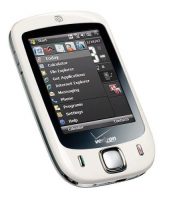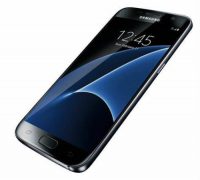When I was growing up, Memorial Days were a ton of fun. Most of Dad’s side of the family would get together at our house (about 20 people.) Some years it was warm enough to swim while other years we’d have cold and rain, but we would always have fun. For a few of the years, we had a video camera. The footage is far from stellar, but I stumbled on a digitized copy recently and decided to edit it down. Don’t expect a masterpiece, but it brings back fun memories for me as I watch it. There are some more that I’ll get around to editing and posting down the road.
Model Y Tire Research
Welcome to another Tesla Tuesday!
After almost 40,000 miles, the time has come to break the streak of spending $0 on service and maintenance (other than windshield washer fluid.) We’re probably replacing the tires a tad bit early, but they’re down to under 5/32″ in some places and at that point the tire shops stop doing repairs, etc. And since I regularly watch my wife and child drive off in the car, I feel better knowing they can stop quickly when they need to. 40,000 miles seems light to me for tire wear, but reading experiences from other users, it sounds like we did average/well on the stock tires. The cars are heavier and very sporty so it’s easy to burn through the performance tires.
Shopping for tires on our Tesla Model Y was an interesting experience. For example, I’ve never really considered rolling resistance of a tire before. Sure I know that some tires are marketed as more efficient than others, but since Teslas have such detailed economy measurements, I was able to find specific percentage differences in various tires. The challenge is that those measurements were mostly self-reported and varied widely in believability.
The second surprise was being reminded that we are effectively drive a sports car. It can do 0-60 in 4.7 seconds (or 4.2 if you swipe your credit card) and those tires are more expensive than what we bought for our Escape or Impreza.
The third surprise was just how much prices have increased since we last purchased tires in 2019. As I was shopping, I kept getting sticker shock at the total installed price. I got the idea to look up our receipt from 2019, find those exact same tires, and then compare the price. It turns out that the same set of tires from 2019 would have cost 27% more if we bought them now. So add that to the fact that these sportier tires were more expensive than the previous tires (an extra ~$90/tire) and that explains the sticker shock. I did check out Costco and was initially going to use them, but I ended up picking a tire that they didn’t offer. I found their tire prices similar but their installation and warranty was much cheaper.
In the end, I chose the Hankook iON evo SUV tires. They’re less performant than other popular options but offer longer tread life. I also got an alignment done because the initial tires were more worn on the inside than on the outside.
Time will tell how well these new tires hold up. It will come as no surprise to you that I was have an absurd amount of data to eventually compare their efficiency with the stock tires.
Google Pixel 7a Upgrade
We usually try to keep our phones 2-3 years, but even though we just got our Pixel 6a’s ~12 months ago, we’ve upgraded. I was having some oddities charging my phone sometimes and Tyla had trouble with the fingerprint sensor with one of her hands. Neither was a major problem, but I noticed that the 7a’s were on sale for $370 and our 6a’s were worth $200 on trade in. So for $170 per phone, we could upgrade. Why not? The 7a is a pretty big jump from the 6a in that it has face unlock, wireless charging, and an even better camera. We only paid $300 for our 6a’s so they basically cost us $100 for a year of use.
Even after a year of usage, the batteries on our phones were easily lasting through the day and the pictures that it took were gorgeous. I’m still a very big fan of the Pixel “a” line of phones. I would wager that if you had Pixel 7a and a flagship $800-$1000 device, most people couldn’t tell the difference. The only thing that might tip them off is screen size, but personally, I’m not a fan of the gigantic phones. I want someting that easily fits in my pocket. The 7a is exactly the same dimensions as the 6a, but don’t worry: they moved the buttons about 1 mm so you have to buy new cases.
If you’ve been on the fence about trying out the Pixel *a lineup, expect to see more sales on them as we get closer to the next batch of phones being released. I expect to see them on sale in the $300-325 range over the next few months. They’re fantastic devices and the cameras in them rival any phone at any price.
As is the norm when we upgrade devices, here’s an updated device history:
EV and ICE Efficiency
Welcome to another Tesla Tuesday! Maybe this is more of “EV Tuesday” but we’ll go with it.
Let’s talk about energy efficiency. We know that 30-40mpg is good for an ICE (internal combustion engine) vehicle. But how good is it when you consider all the available energy in the gasoline? The EPA says that a gallon of gasoline is equal to 33.7 kWh. That’s a huge amount of power but the engine only converts 25-30% of that into useful energy. The vast majority of the energy in gasoline is lost to heat.
To put that amount of energy into perspective, there’s theoretically enough energy in a gallon of gasoline to power our house (minus EV charging) for 1.5 days. When full, my F150 has almost a megawatt of power in the gas tank!
EVs on the other hand are more like 80-90% efficient. That can vary more widely though because, for example, in cold weather, heat isn’t free like it is in an ICE vehicle, so you have to use extra energy to generate heat. In an ICE vehicle you’re generating way too much heat year-round whether you want it or not.
Our Model Y LR is one of the most efficient EVs you can buy, and over the first 37,000 miles, it has averaged 278 Wh/mi (Watt hours per mile) or 3.59 miles/kWh. With the energy in one gallon of gas, it could go 121 miles.
This is exactly how the EPA generates their MPGe metric. It’s a bit of a silly calculation because you’re never going to build a car that can extract 33.7 kWh from a gallon of gasoline, but I think it is useful to understand how all those calculations work. And when you hear about how efficient a particular car is, remember that 70% of the energy it’s consuming is lost as a byproduct.
Tips for Visiting the San Juan Islands
The San Juan Islands are a gorgeous place to visit and half the fun is the 1+ hour ferry ride that it takes to get there. However, the islands are a popular destination and it can be a bit of a challenge to plan a trip there. Rather than write this up multiple times in various emails to people, I thought I’d capture it all on a single page that I can share in the future.
1. Plan Ahead for the Ferry Ride
- Ferry Costs: The ferry ride to the San Juan Islands isn’t cheap, but keep in mind that you’re paying for a round-trip ticket. You’ll pay to get to the island, and the return trip is free. Check the fares ahead of time to avoid surprises. We recently paid $90 for a car, two adults, two seniors, and one child.
- Anacortes Ferry Terminal: The Anacortes Ferry Terminal is busy. Multiple boats operate from here, so expect queues. Reservations are highly recommended! You can make a reservation for free, and there’s no charge for canceling up to 5 pm the day before. Just ensure you’re in line within 30 minutes of the scheduled sailing time to avoid a no-show fee. Remember, you pay the actual ferry fare when you arrive, not when you make the reservation.
- Ferry Schedules: The ferry schedules are limited due to the approximately 1-1.5 hour ride each way and multiple destinations. Sometimes, your ferry might even stop at another island along the route. Check the schedules in advance to plan your trip effectively.
2. Timing Your Day Trip
- Be Prepared for a Long Day: With less frequent sailings, it can be challenging to make a day trip. For instance, we left home at 8 am, got back at 7 pm and had about 4 hours on the island.
3. Transportation Options
- Driving vs. Walking On: While it’s cheaper and easier to walk onto the ferry and park your car at Anacortes, this option limits your mobility on the other end. If you drive your car, you’ll have more flexibility to explore the island, but be prepared to carry your supplies.
4. Choosing Your Island
- Shaw Island: Shaw Island is more rural. I’ve never been there and I don’t think that it’s generally a day-trip tourist spot.
- Lopez Island: We once stayed at an Airbnb on Lopez Island. It’s a bit busier than Shaw but still maintains a laid-back vibe.
- Orcas Island: This is a big island with plenty of tourist activities, but they’re not very close to the dock. Figure out your transportation in advance. (We always drive our car onto the ferry.) There’s a decent-sized town and a state park with great camping but make your reservations for the campground early.
- Friday Habor: Friday Harbor, technically part of San Juan Island, is full of tourism options. Many attractions are within walking distance of the ferry terminal. If you have a car, explore three excellent park options. Don’t miss learning about the “Pig War” historical event. There’s a National Historic Park on both ends of the island (one American camp and one British camp). Additionally, Lime Kiln State Park in the middle is renowned for whale watching from shore. Right by the ferry terminal, you’ll find food options. San Juan Island Brewery is a favorite stop for us, offering a variety of good beer and a substantial food selection (including pizzas, soups, burgers, chicken, and sandwiches). They have around 10-15 beers on tap, and it’s kid-friendly. Most entrees are priced at about $17-20.
I had no idea about the incredible Washington State Ferry system when I moved out here, but it’s the second busiest ferry system in the world (second only to the British Columbia ferry system.) They make for fantastic day trips!
Sports Streaming Costs
I haven’t regretted cutting cable in 2018. We’ve saved well over $3000 by not having that bill. I thought I’d miss it for sports, but honestly, I found that I was happy not watching as many random sports. Rather, I found specific sports I wanted to watch and paid for their streaming services. It’s interesting how much the price of those services vary though! I did some research to try to figure out how much it would cost to stream various sports leagues. I expect this will be out of date even before I finish researching it.
| Sport | Full Season Cost | Comment |
| Formula 1 | $85 | If you watch the races delayed by a day or two it’s only $30. |
| NFL | $350 (out of market games) $400 (in market games) | Out of market through NFL RedZone and in-market through Fubo for 5 months. NFL+ is an interesting option too for only $40/year. You get access to replays of every game shortly after it ends plus live local games, but it’s only on a mobile app. |
| MLB | $130 (out of market games) $480 (in market games) | Out of market through MLB+ and in-market through Fubo for 6 months. |
| NBA | $150 (out of market games) $480 (in market games) | Out of market through NBA Leage Pass and in-market through Fubo for 6 months. |
| NHL | $70 (out of market games) $560 (in market games) | Out of market games through ESPN+ and in-market through Fubo for 7 months. |
| MLS | $199 | All games through MLS Season Pass add on to Apple TV Plus. This price includes 10 months of Apple TV Plus. |
| Golf | $960 | All events through the Golf Channel on Fubo for 12 months |
| NASCAR | $800 | All events through Fubo for 10 months |
| Disc Golf | $130 | Alternatively, you can watch many of the events for free with commentary on Jomez Pro’s YouTube channel. |
| MotoGP | $135 | All events through MotoGP VideoPass |
Existing laws and contracts make it difficult to stream the major US sports because in almost all cases, in-market games are not available on the league’s streaming service. That requires you to buy into something like FuboTV which is combines all the braodcast and cable sports channels. Alternatively you might be able to use an antenna to catch your local games as long as they are on a broadcast channel. Leagues that completely control their TV writes are in a much better position (F1, MotoGP, MLS, etc.)
I currently pay for the F1 TV package and then I watch disc golf tournaments for free on YouTube. Every once in a while I’ll toss in a Seahawks game recorded from our antenna or a Purdue basketball game streamed on our free (through Comcast with ads) Peacock subscription.
A big key in all this is deciding whether you want all the games in the whole league, all of the games for your favorite local team, or just some random sports to have on in the background while you take a nap. The prices for those three can vary wildly.
Come to the WELS
I belong to a national church body called the “Wisconsin Evangelical Lutheran Synod.” Every month, they put out a video called “WELS Connection” to share what’s happening around the rest of the synod. The videos are short and are usually shown after church. As a kid, it was always fun to see the TV wheeled out and the VHS tape popped into the VCR. Each video started with a very 90s song called “Come to the WELS.” (Any of you fellow members over the age of about 25 now have this song stuck in your head.)
The videos use a different song today, but it got me wondering how long that song was used. It’s fairly difficult to find any information partly because there isn’t much available and because there’s a more popular Counting Crows song called “Come to the Well.”
After searching around on YouTube for more time than I’d like to admit, I realized I should check the WELS website and sure enough, they have an archive that goes all the way back to 2009. In September 2009, the videos switched from “Come to the WELS” to “Jerusalem the Golden” and then in June 2013, they switched to “In Christ Alone” which is still in use today.
But I still have unanswered questions. Who wrote “Come to the WELS”? Who sang it? Who decided to replace the flutes at the end with kids singing? Was the whole song rerecorded for that change? What does Pastor Rosenau think when he looks back at his Jan 2009 appearance? What’s Pastor Bill Burnhardt up to? What would happen if you listened to that song for an hour straight?
Trakt.tv
Now that pretty much all entertainment is available to be streamed at a moment’s notice, it has become increasingly hard to keep track of what we have watched. We also try to only have one streaming service at a time so when we switch to a new one, we’ll sometimes stop in the middle of a season. I started keeping track of this in the Just Watch app but it bothered me that the data was not exportable from their app. Enter trakt.tv.
Trakt.tv is a platform specifically for this purpose. Anyone can make an app on top of their database so you just make one account with them and then pick whichever app you like the best. You’re in full control of your data.
I ended up paying for a year of “VIP” service which, among other things, removes adds and lets me see which services are streaming a specific show. We’ve had it for a few months now and I expect we’ll keep paying for it. (Note that they do have a free option which is very good too.)
You Don’t Need More Bandwidth
Here’s a tip: the next time you’re on the phone with your internet provider and they say “For $10/month, I can offer you X bandwidth”, just say no. You almost certainly don’t need it. Another common way they start this conversation is by asking what you do with your connection or how many devices you have connected. No matter what you say, they’re going to explain why you don’t have enough bandwidth.
I have over 30 devices connected to my network, work from home, do frequent video calls and screen sharing, stream multiple TV shows at the same time, and play online video games, but I’ve lived for a couple of weeks with 10Mbps down and 10Mbps up and it didn’t impact life at all. (My service was busted and it took them a long time to figure out why.) But of course, as soon as I was back to the 240Mbps down, 10Mbps up service that I was paying for, the sales guy insinuated I was dumb for not paying $10/month more to get 400/10 service. They’ve overselling you. Basically the only time you’ll notice that extra speed is if you’re trying to download enormous files like new video games or operating system ISOs. I’d only pay for more than the base package if a slight increase in price would get me higher upload speeds. That’s rarely an option though.
So go for whatever the cheapest package is and I bet that the only difference you’ll notice is that you have a little more money in your account each month. And even if you decide I’m wrong and you need more speed, they’re always going to be happy to bump you up to a higher package with no change fees.
















Picking Stocks
A relative is going through a class in school where they are picking stocks to see who can make the most play money over the course of the class. On the surface, I think it’s a fine idea, but if this is the only exposure that the students have to the stock market, it might do more harm than good. Picking individual stocks is risky at best and pure gambling at worst. It can be a fun hobby but it should almost never be used as a real investment strategy. So what to do? I sent them some thoughts and figured I would post it here as well.
John Bogle, the visionary behind Vanguard, shares his wisdom in the book “The Little Book of Common Sense Investing” which I’ve written about before. It’s concise, backed by research, and a must-read for anyone thinking of investing their money. Bogle’s book dispels common myths about investing. Here’s the bottom line: picking individual stocks or relying on mutual funds managed by others is a losing game over the long haul. Sure, there might be temporary hot streaks, but consistently beating the market over decades is effectively impossible. The market wouldn’t work if it was possible to consistently beat it.
So, what’s the winning strategy? Low-cost, total market index funds.
The only thing left at that point is to figure out which actual funds to buy. This is where strategies can vary a bit, but they’re generaly fairly similar. Here are two popular strategies:
Of course it’s important to remeember that all of this investing has a bigger tax burden than tax-advantaged accounts like a 401k or IRA. Investing directly in the market is generally only something to consider after you’ve maxed out your better options. Financial health can feel overwhelming but as I’ve written about before, this flow chart does a great job of breaking it down. Or if that’s too much, start with Dave Ramsey’s 7 Steps.
I’m no expert and you shouldn’t blindly follow anything I’ve written here, but you should have your own opinions about this. If you’re going to rely on individual stocks, you should read Bogle’s book and be able to explain why you think he’s wrong. It’s so easy to get sucked into thinking this has to be complicated, but the complicated route will almost always lose you huge amounts of money down the road.